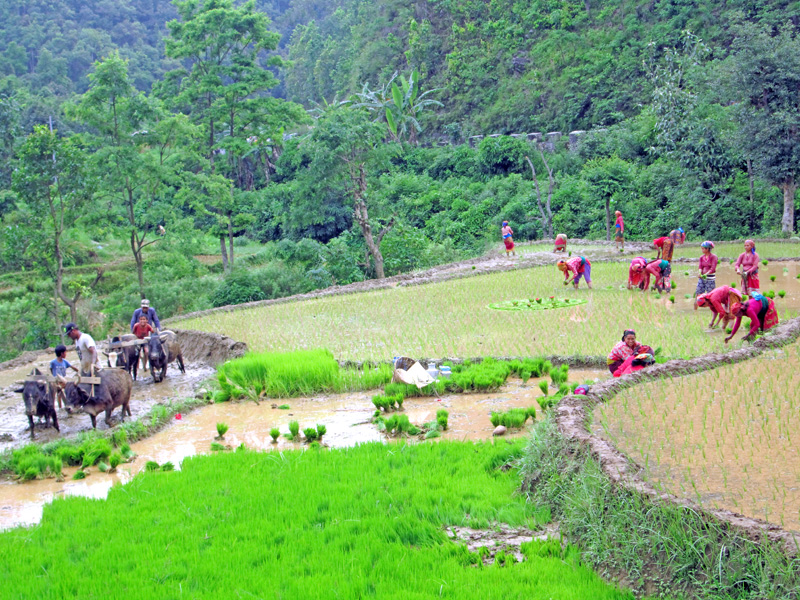Cent percent Rice transplantation in Karnali

Kathmandu / July 31 : One hundred percent rice transplantation has taken place in Karnali Province this year as against 98 percent last year.
Karnali which is known as the ‘dry province’ has 38,385 hectares of land suitable for paddy production.
The timely rainfall this time led to the encouraging rice transplantation in the Province. Karnali is likely not to suffer hunger crisis this year.
Rice has its significant contribution to the nation’s economy and its growth would obviously have its positive impact on the economy and thus in the Gross Domestic Product (GDP). Rice production has 12 percent contribution to the Gross Domestic Product.
This year, monsoon had arrived on May 29 and farmers hare happy to see the completion of rice transplantation on time.
More than 97 percent of paddy plantation may take place until mid-August, said Januka Pandit, Deputy Director General for the Department of Agriculture.
Sudurpaschim Province has witnessed 99 percent paddy plantation and Lumbini 97. Similarly, Provinces 2 and 1 saw 92 and 90 percent respectively.
Paddy is main crop of the country. Paddy plantation has taken place in three seasons.
Out of the total 3,091,000 hectares arable lands, only approximately 50 percent has been used for paddy plantation. Most of paddy plantation is dependent on rain for irrigation. Around 47 percent of lands in the country have got irrigation, said the Ministry.
The fiscal year, 2019/20 saw most paddy plantation in 16 years, according to available data. In the FY, paddy plantation on over 1.4 million hectares of lands took place and more than 5.6 million paddy grains were produced.
The productivity growth of rice in Nepal in the last 54 years was 1.5%, and has not kept up with the population growth rate of 2.3%. Nepal’s per capita rice consumption per year in Nepal is 137.5 kg, one of the highest in the world, but we do not produce enough rice in the country.
Additionally, the spread of roads and better income means more people are switching to rice, and the demand for branded fine, aromatic and long grain rice is increasing.
The share of rice in total cereal consumption has gone up to 67% as people abandon traditional nutrient-dense food like maize, finger millet, buckwheat, barley, foxtail millet, and amaranth. Still, rice contributes 40% of the energy and 23% of protein in a Nepali’s daily diet.
Nepal needs to adopt technology-intensive farming to increase rice productivity by at least 1.5 times in next five years and reduce cost of production to make it competitive while protecting the environment.
This is best done by integrating climate resilient technologies and precision rice farming practices widely.
